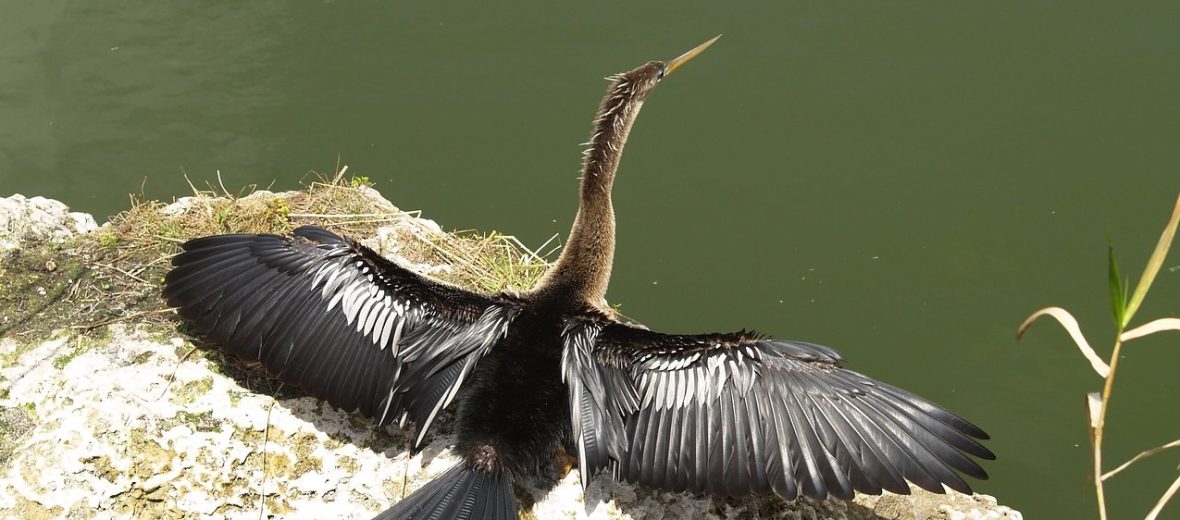
The anhinga, aka American darter, darter, snakebird, water crow, or water turkey, can be found from Southeastern United States, to Mexico, into Central America, and down through South America. They can be found near rivers, marshes, lakes, mangrove swamps, shallow lagoons, and bays with an abundance of tall trees and dense vegetation. They are partial to fresh and brackish water environments. Since these birds are abundant and face only the threat of habitat loss and pollution, they are listed as Least Concern by the IUCN. Their numbers are decreasing though.
First the Stats…
Scientific name: Anhinga anhinga
Weight: Up to 2.4 lbs.
Length: Up to 35 inches
Wingspan: Up to 3.7 feet
Lifespan: Up to 12 years
Now on to the Facts!
1.) Anhingas are related to cormorants and pelicans.
2.) Their name hails from the Brazilian Tupi language and translates to “snake bird” or “devil bird.”
3.) These birds are skilled swimmers.
4.) The anhinga’s feathers are less buoyant than other water birds, like ducks. This is why they swim slightly submerged in the water, with just their head and neck above the waterline.
5.) Anhingas are diurnal (active during the day).
But wait, there’s more on the anhinga!
6.) Although solitary among their own kind, they will dwell in flocks of other birds, like herons, ibises, cormorants, and storks.
7.) These birds are very territorial and when approached by another anhinga, they will spread their wings and snap their beak to threaten each other. They will also peck at each other’s head and neck.
Did you know…?
In Southern Florida, this bird is called the “Grecian Lady,” and the Creoles in Louisiana call these birds “Bec a Lancette,” which translates to pointed bill.
8.) Since their feathers are not water repellent, like some other water birds, they will dry themselves and sun themselves by spreading their wings and thus drying their plumage.
9.) Although normally quiet, they can produce clicks, croaks, grunts, and rattles.
10.) Fish, aquatic invertebrates, insects, amphibians, and reptiles are all on the menu. But their favorite is of course fish.
But wait, there’s still more on the anhinga!
11.) Anhingas are monogamous (mate for life).
12.) In the far northern and southern areas of their ranges these birds have a breeding season. Closer to the Equator, these birds can breed year round.
Did you know…?
Like turkey vultures, anhingas can soar high in the air and can go long distances without having to flap their wings.
13.) Even though they are primarily solitary, they will nest in large colonies with their own kind and among other bird species.
14.) Females lay up to 5 eggs that hatch in up to 30 days.
15.) Both parents participate in incubation duties.
But wait, there’s still a little more on the anhinga!
16.) Feeding the chicks is first done by dripping regurgitated fish and other fluids right into their open bills. As the chicks develop, they then start reaching into their parent’s bills to obtain food.
17.) Their necks have specialized vertebrae and muscles that allow them to spear fish with their beak.
18.) A group of anhingas is called a kettle.
19.) Alligators, crocodiles, ravens, and hawks all prey on anhinga adults and or their chicks & eggs.
Now a Short Anhinga Video!
Be sure to share & comment below! Also, check out the Critter Science YouTube channel. Videos added regularly!
Want to suggest a critter for me to write about? Let me know here.



